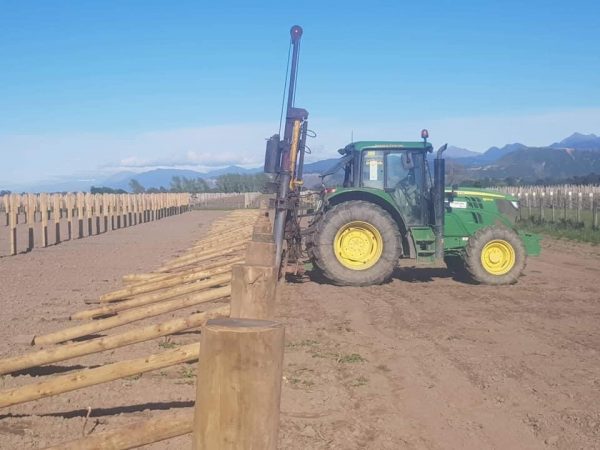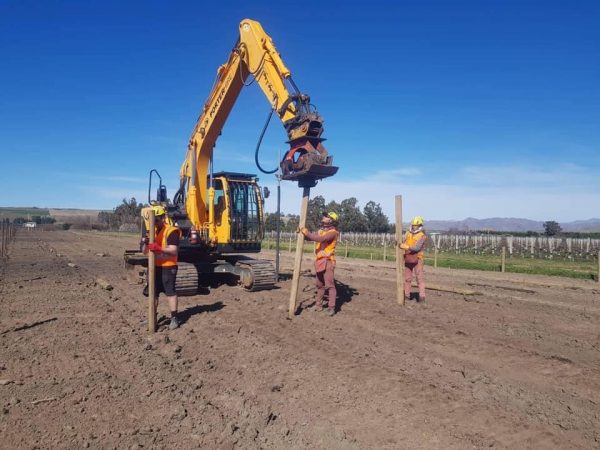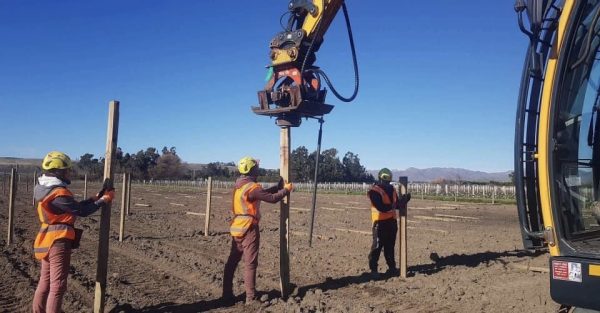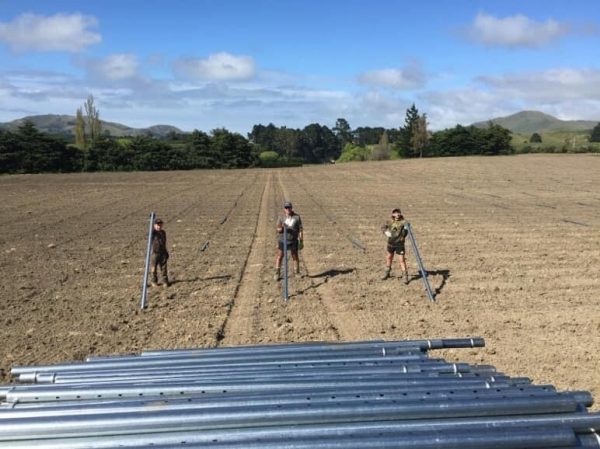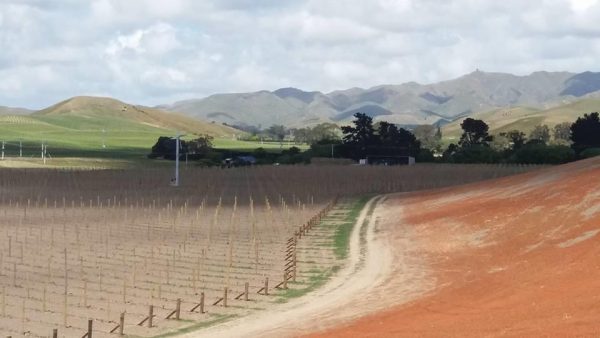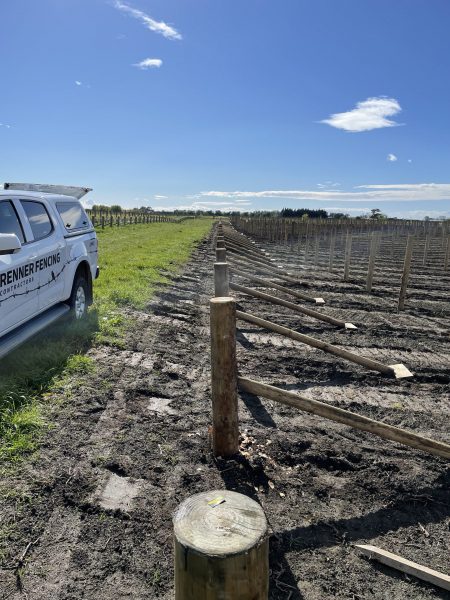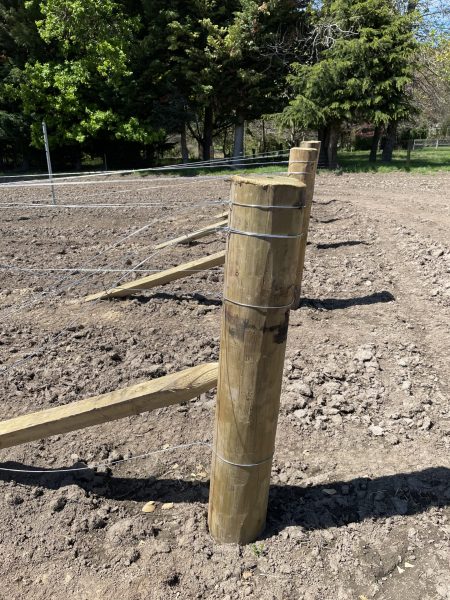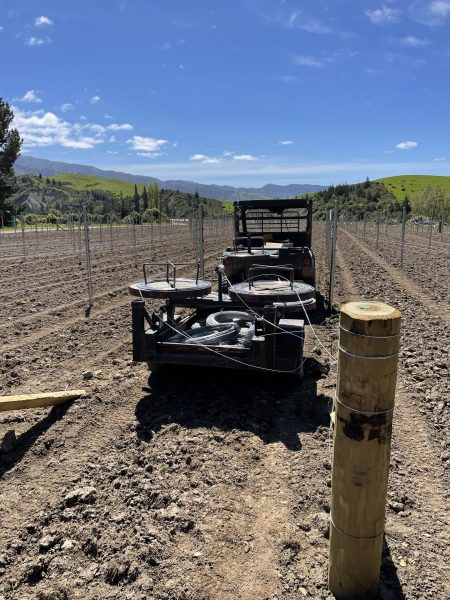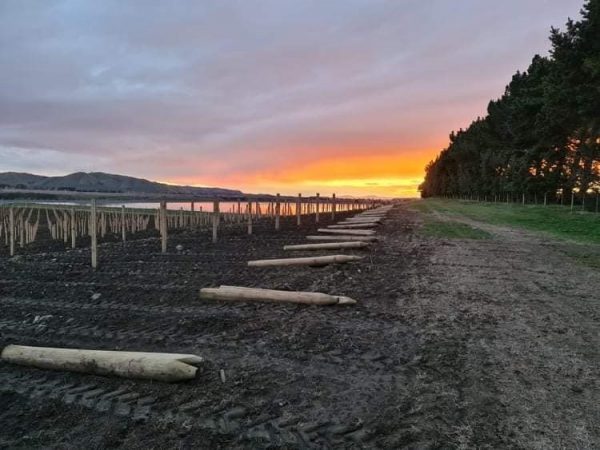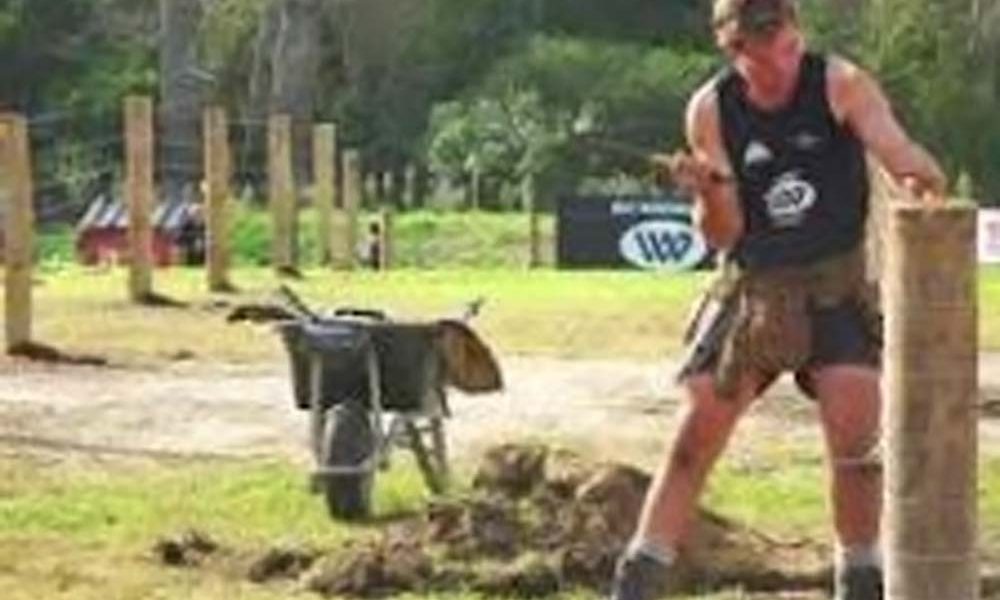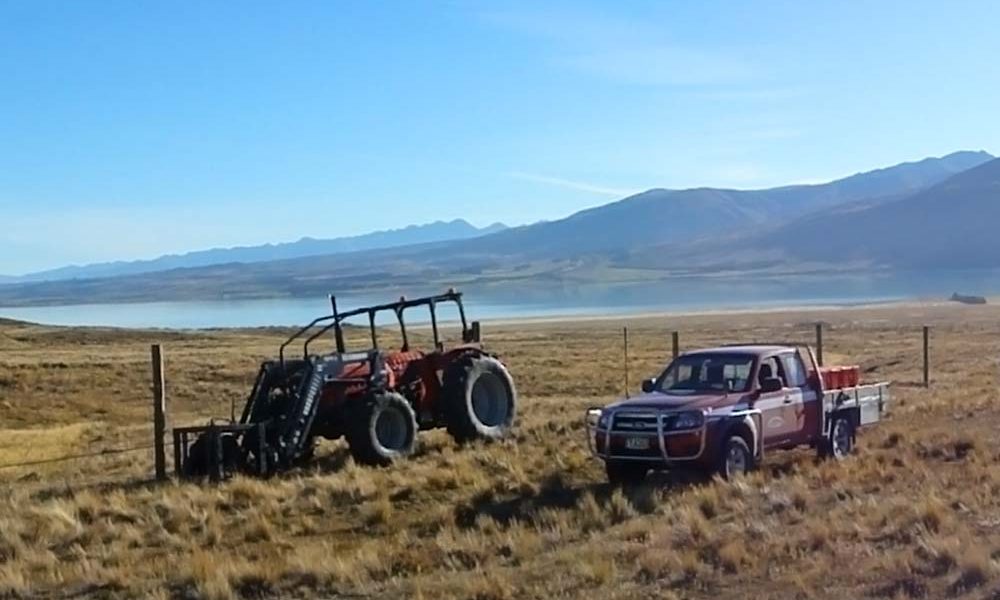
Marlborough has the reputation of being the biggest wine-growing province in New Zealand and is fast running out of land to put grapes. The big companies are buying all the plants and now there is a shortage of plants in New Zealand. Orders are already being taken for 2024.
2021 was a quiet year compared to others for Renner Fencing as we normally develop approximately between 200 to 250 Hectares in a season, which starts late August and finishes before Christmas. We can do up to 10,000 strainers and 120,000 intermediates plus around 7,000 stays in one season.
Vineyard fencing trellis rows are different from your normal fencing standard practice. It starts with a digger in most cases ripping the GPS line for your vineyard rows, anywhere between 600mm to 900mm deep depending on plant type and intermediates the client wants to use. Plants are spaced out evenly 1.8m and are most commonly machine planted. The ones that are hand planted are done earlier in the season and are normally small blocks.
Posts are 7.2m apart down the trellis row and the trellis rows can be as close as 2m apart but normally anywhere from to 2.4m to 3m apart. Intermediate posts are all types in Marlborough with plastic future posts coming freshly on the scene but the most favoured is the half-round wood and eco trellis steel post a close second.
VINEYARD DEVELOPMENT
Renner Fencing comes on the scene first in the vineyard development season, laying-out posts with the help of overseas workers. These guys work hard and can lay out up to 7000 intermediates in one day, they also lay out the strainers, stays and stay blocks. The 15 Tonne digger is next on the scene with three men to help us out lifting the posts and putting them in place – which is normally marked out with a popsicle stick or a rip line marking the exact place for intermediate to go.
We do 3 rows at once with the digger straddling the middle row. It takes a couple of days for the crew to get into the groove of vineyard fencing but by the week’s end they can be hitting around 2,000 a day.
STRAINER DRIVING
Next job is the strainer driving at the end of each row. Strainers are survey-marked with a little wooden peg. Wooden strainers are far the most favoured here in Marlborough, the strainers are 2.4m/175 (or number ones as you call them up north). Strainers are driven 1200mm in, 1200mm out.
Our trusty Taege Post Drivers work hard but get a hammering and depending on the ground can do as low as 40 per day if the ground is hard and over 200 if it’s good going. This takes two men; one on the Post Driver and the other backing into each strainer peg and in between chamfering each strainer with a chainsaw and boring a stay hole with a 65mm boring bit, not mortest square.
The stays have been done for a long time now with a round stay hole and don’t fail if done properly. Stay hole conventional height is the same as a fence – just above kneecap height or just over halfway down the 2.4m strainer – the 2.4m stays point end goes neat and tight into the hole.
Positioning the stay block hard up against the end of the stay on the ground ready for the digger to dig the stay in, the stay block is used to get the exact position of the back wall which allows the placing of the digger bucket gently against the stay block. The stay block goes vertical so when they cultivate in between the rows they don’t hit the stay blocks.
We had a guy that is now retired that could do up to 600 stays in a day, you imagine trying to square mortise stay holes in front of him.
WIRE AND IRRIGATION
Now the vineyard block is ready for the wires and irrigation to be run. There are 7 wires on average: one for the irrigation to fruiting wires and four lifting wires. The wires are run out with a quad bike or side-by-side and a wire trailer towed behind that can run up to 5 wires at a time. Wire tension is around 150 gauge for the fruiting and irrigation wires and the four lifting wires I normally 100 gauge. The reason for this is they get shifted up and down the intermediate depending on the season.
The weight of the wires on a vineyard strainer are all at the top – with only the one wire below the stay, which is the irrigation wire. Fruiting wires are around 900mm to 1m high above the ground and the lifting wires are close to the top of the strainer putting more pressure above the stay.
Triplex strainers are used mainly on the lifting wire so they can change the tension when lifting in place around this time of the year. When development is in full swing, we still have two to three fencing crews going which keeps me extremely busy – organising the development crews and fencing crews, having up to 15 people on the books when normally it is only 7 or 8.
Marlborough has definitely changed over the years gone by. Renner Fencing has had to diversify to keep up with the demand of the changing landscape.
Article supplied by: www.rennerfencing.co.nz
www.rennerfencing.co.nz
Published in WIRED December 2021 by Fencing Contractors NZ
Follow us on Facebook
© Fencing Contractors Association NZ (FCANZ)

